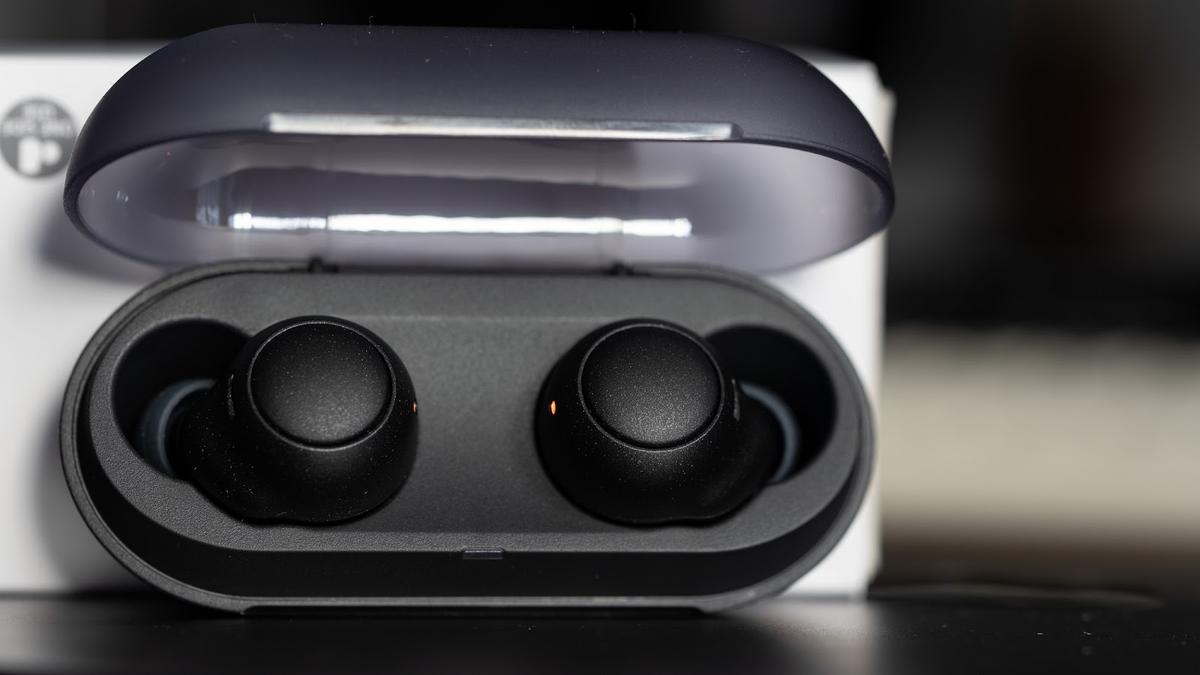Sony’s budget TWS IEMs offer an engaging sound signature while removing ANC and other smart features to keep the cost down.
- Decent build, signature Sony design
- Very comfortable to wear for longer periods
- Google Fast Pair support, reliable controls
- Good battery life
- Sony Headphones app offer some customization options
- Upper-mid forward tuning without any bass bloat
- Very good price-to-performance ratio
- Cheap looking carry case
- Not the most technically proficient TWS IEMs out there
- Certain tracks exhibit midrange shoutiness
- No ANC
- No wear detection
- Buttons cannot be customized
Where to Buy
Introduction
Sony’s flagship TWS IEMs, the WF-1000XM4, have garnered much attention since their launch. They offer a boatload of features while having a pleasing tonality.
However, the budget offerings so far have not seen much fanfare. The WF-C500 have mostly flown under the radar but recently gained a cult following thanks to their tuning. While most budget TWS IEMs aim for bold bass at the cost of tonal aberration, Sony aims for clarity and balance with the WF-C500.
Do they attain that goal without sacrificing too much on usability to keep the price low? Let’s find out.
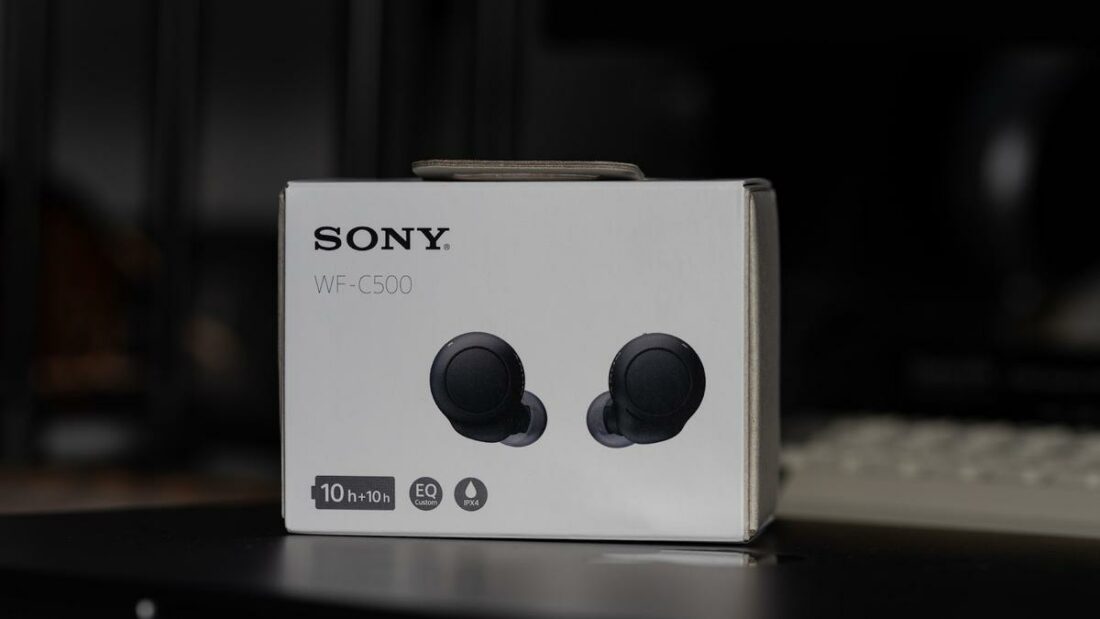
Case ⓘ
Battery ⓘ
- Battery Life: 10
- Connector: USB Type-C
- Wireless Charging: No
- Battery Capacity: Not specified
The case holds 10 hours of battery on paper and can be charged via the USB-C port at the back. There is no wireless charging, but at this price point, the absence is expected.
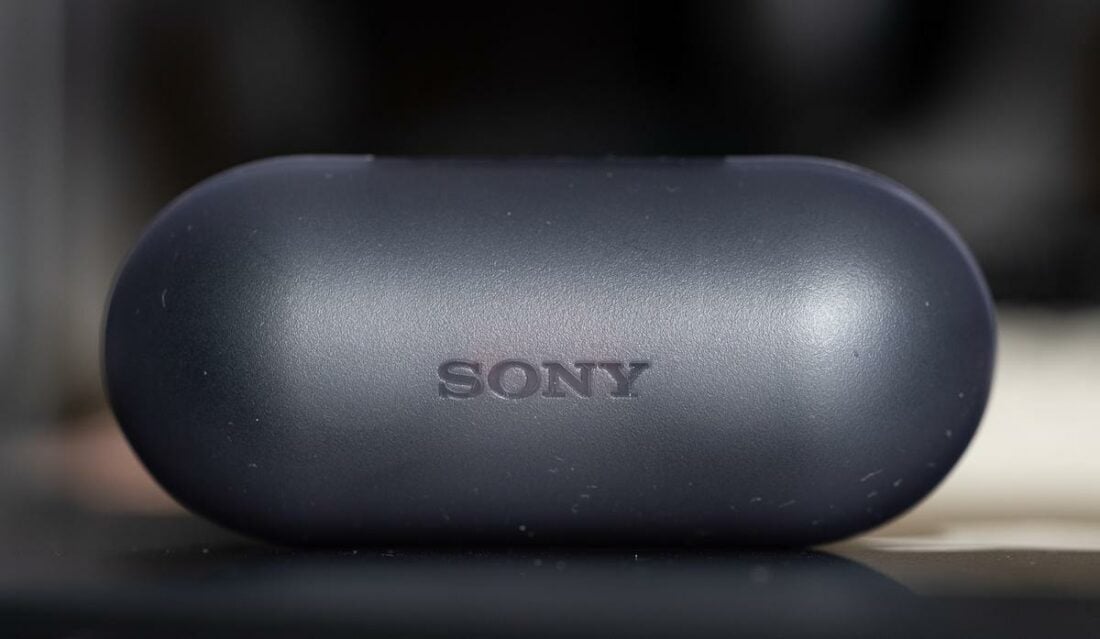
UX ⓘ
- Can be opened easily with one hand: Yes
- Pass the shake test: Yes
- Light Indicators: Shows estimated battery life left and shows charging indicator
The case can be opened using one hand, and the top cover can lock itself when pushed backward, making it easier to take out the IEMs. The LED on the front shows the battery level and doubles as a charging indicator.
Unfortunately, the WF-C500 do not allow any customization of the controls. The default configurations are as follows:
- Right earbud, single press: Play/pause music, accept/end call
- Right earbud, double press: Next track
- Right earbud, triple press: Previous track
- Right earbud, press and hold: Voice assistant
- Left earbud, single press: Volume up, accept/end call
- Left earbud, press and hold: Volume down, reject call
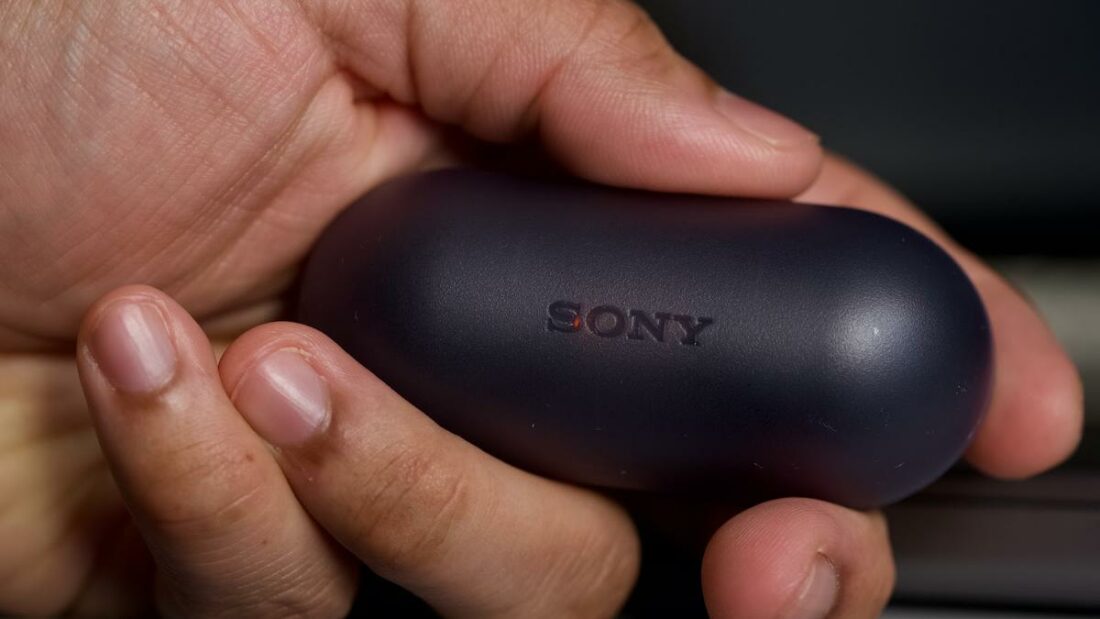
Design ⓘ
- Shape of the case: Rectangular
- Material: Plastic
- Build Quality: Average
The carry case is very lightweight, but the cheap plastic gives away the budget pricing. The top shell is translucent, and the earbuds’ LEDs shine through them to indicate when the IEMs are charging. The case is on the larger side at nearly 87 cubic cm volume.
Portability ⓘ
- Weight: 35g (case only), 45.8g (with earbuds)
- Volume: 8 cm x 3.5 cm x 3.1 cm = 86.8 cm cu
- Portability: Average
Earbuds ⓘ
Battery ⓘ
- Battery Life: 10 hrs
- Charge Time (15mins): 80 mins playback time
The IEMs are rated to last 10 hours on a single charge. For me, it was closer to 9 hours and 40 mins. The carry case holds enough juice to charge the IEMs from empty to full. I need to charge them about twice a week during regular use. Your mileage may vary.
Sony specifies that the WF-C500 need 2.5 hours to fully charge.
UX ⓘ
- Control Mechanism: Mechanical
- Touch Accuracy: N/A
- Control Symmetry on both earbuds: No, individual setup for each earbud
- Mono Use: Yes, both sides
The circular faceplate also doubles as a push-button. The upside of this is that there is no finicky capacitive touch panel that may accidentally activate while adjusting the IEMs. The downside is that pushing the buttons may feel awkward while wearing them.
Still, I prefer this button-based system over a touch control, where accidental activations are commonplace.
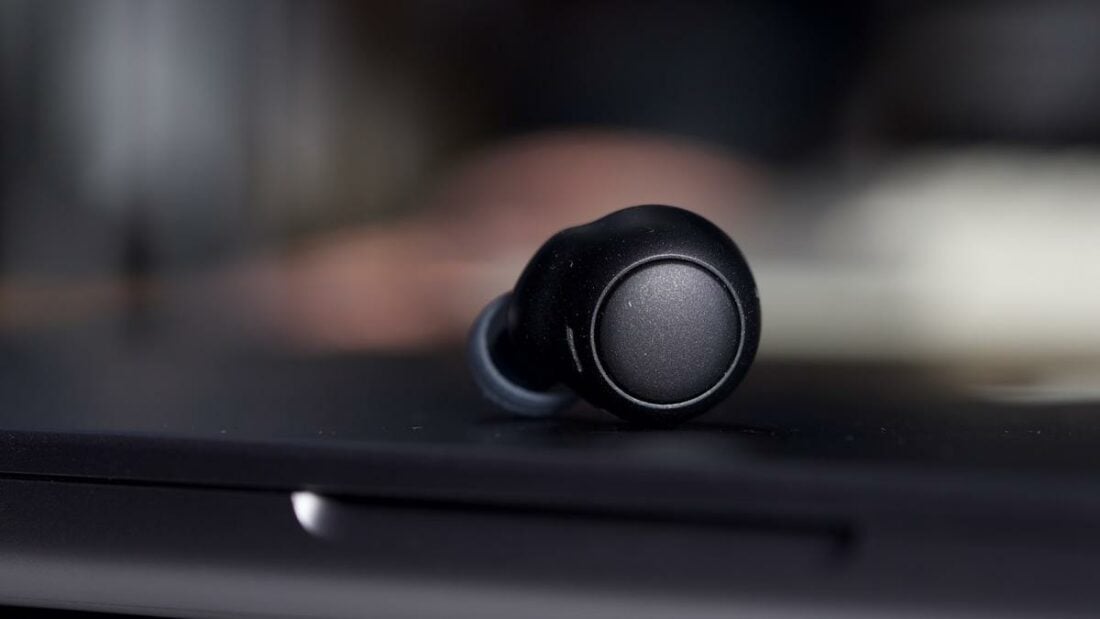
Design ⓘ
- Profile: Low
- Material: Matte plastic
- Comfort: Outstanding
- Fit: Outstanding
The WF-C500 share the design language of their elder brother, the WF-1000XM4. The profile is much slimmer, and the build is noticeably cheaper in comparison. This lighter weight and lower profile allow for outstanding comfort and stability in the ear. The back vent also aids in voice pickup.
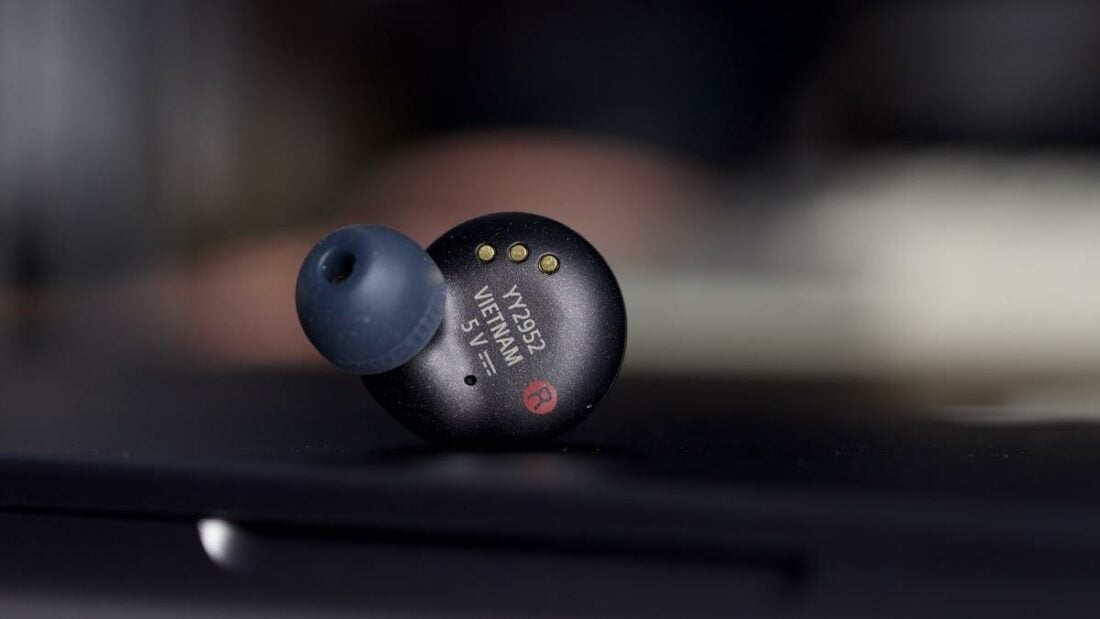
On the inner side of the IEM, there are interfaces for charging alongside a small vent. No proximity sensor here, so wear detection is absent.
Mic ⓘ
- Noise Cancellation: Audible noise
- Voice Pick-up: Good
The mic has good voice pickup in quiet environments but struggles to filter out surrounding conversations when in a crowd. Wind noise is not canceled efficiently, but that’s a challenge for any microphone out there.
Mic demo
Sound ⓘ
- Driver: 5.8mm single dynamic driver
- Sound Signature: Upper-mid focused, can be tuned via the app
- Bass: Good
- Mids: Good
- Treble: Average
- Sound Detail: Average
The Sony WF-C500 have a slightly V-shaped signature with more focus towards upper-midrange clarity.
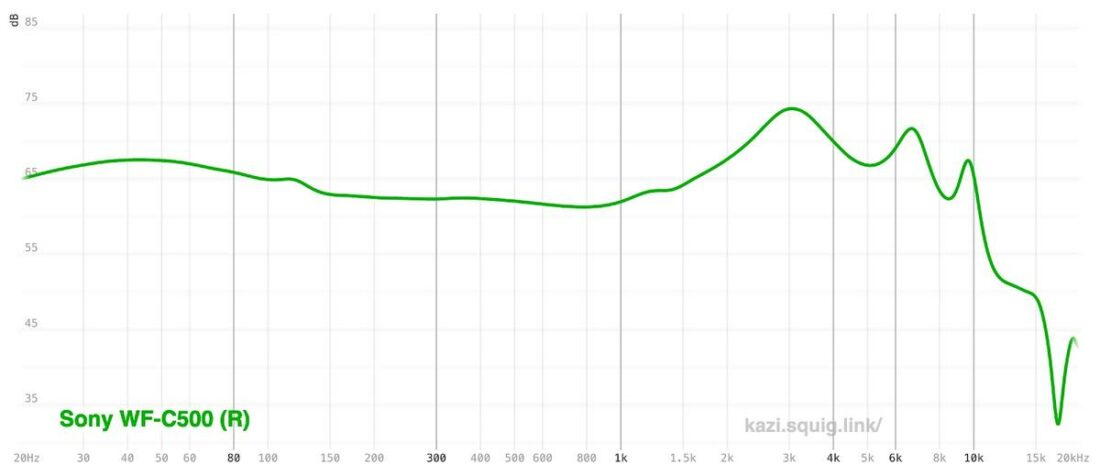
This is a noticeable departure from the typical warm or aggressively V-shaped tuning that Sony opts for. The 5.8mm driver has been tuned to provide clarity in the mids, though said clarity comes at some cost. More on this in the following.
Bass has a slight emphasis in the sub-bass region but remains controlled. With the Clear Bass slider in the app, it’s possible to further fine-tune the bass. In stock configuration, I find the mid-bass lacking some body, but adding extra bass via the slider muddies up the mids. So I leave the bass slider alone.
The driver here cannot keep up with fast bass notes but provides decent rumble when called for. Mid-bass texture is also lacking, but it’s an issue with all budget TWS IEMs I have tried. Given the price tag and the controlled nature, I’d label this as “good” bass.
The midrange is the area where the WF-C500 focus the most. Female vocals are pushed forward and take center stage. The clarity on display is unique among budget TWS IEMs. Strings have a heightened sense of attack with some added crispness. Acoustic tracks sound lively and energetic as a result.
Do note that the lower-mids are thinned out and lack body at times. Moreover, certain high-pitched vocals may exhibit shoutiness.
Finally, the treble mostly adds some life and brilliance into the mix instead of standing out. A presence region peak near 6kHz highlights the initial hit of cymbals and hi-hats, but the ensuing resonance is not portrayed as well due to treble roll-off.
Soundstage is average, and so is imaging. Macrodynamic punch is decent, but sudden bass drops do not exhibit much physicality. Microdynamics or subtle shifts in volume are not very apparent either, but again, for the price and considering the competition, it’s no big deal.
Connectivity ⓘ
- Audio Codec: SBC, AAC
- Bluetooth Version: 5.0
- Bluetooth Chip: Not specified
- Auto-connect when: Taken out of the case
- Average drop-outs in an hour: 0-3 times
- Multi-point connection: No
There is no multipoint support or high-resolution codec available. One surprising addition is the Google Fast Pair support that allows seamless pairing with newer Android devices. You simply need to open the lid near a supported Android device, and a pop-up will appear on the phone for fast pairing. Neat indeed.
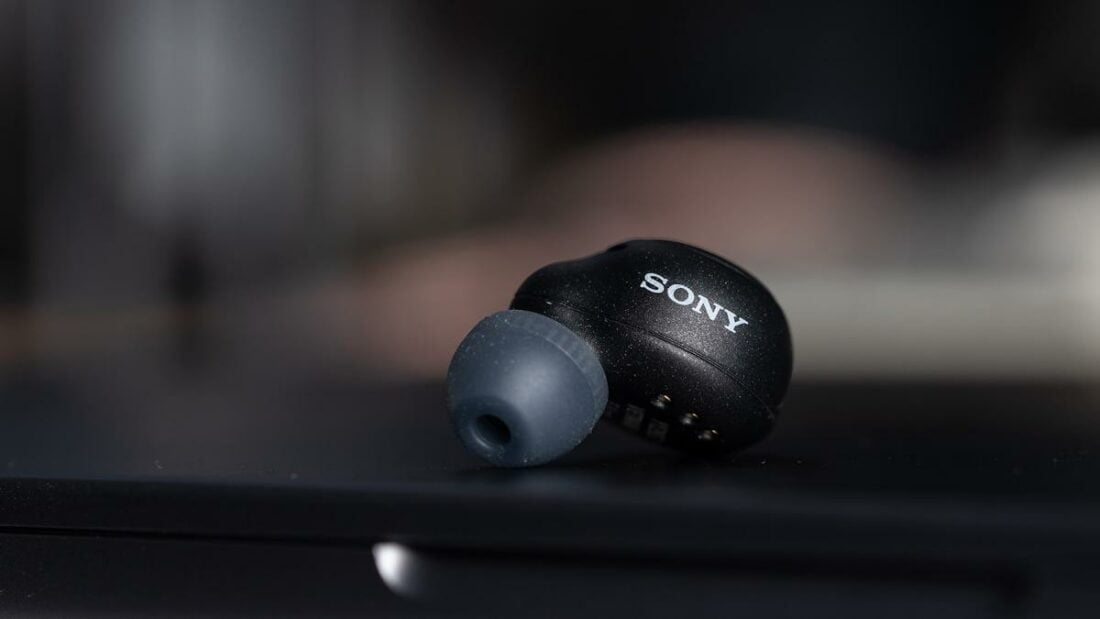
Waterproof ⓘ
- IP Rating: IPX4
The IPX4 rating means that the WF-C500 are secure from minor splashes and water sprays, but there is no dust protection.
Software ⓘ
- Available on: iOS, Android
- 5-band EQ
- DSEE and 360 Reality Audio
- Clear-bass allows for increasing or decreasing sub-bass amount
- Ability to save and import profiles across devices
- Auto Pause: not available.
The Headphones app allows some EQ along with DSP effects like DSEE, which is Sony’s proprietary upsampler. Device firmware upgrade and profile sync across devices can also be done from this app.
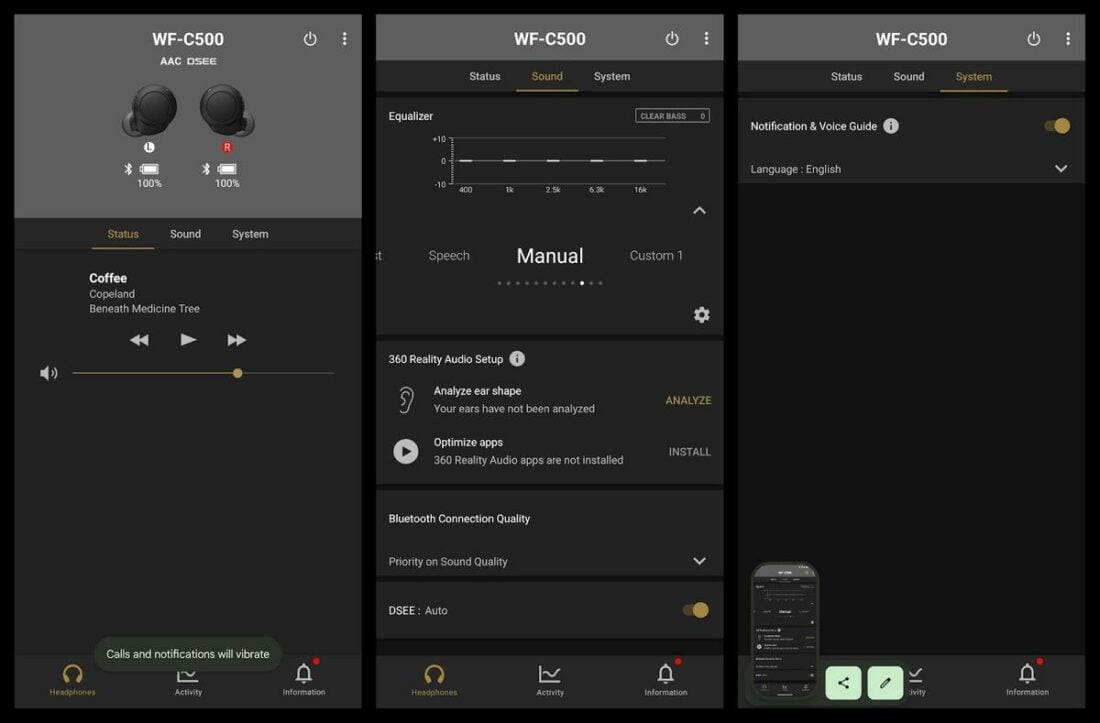
Comparisons
vs Samsung Galaxy Buds Plus
The Galaxy Buds Plus are Samsung’s answer to an affordable TWS. In terms of build, the Buds Plus fare better with a more solid shell design and better built carrying case. Battery life is better on the WF-C500, however.
Fit and comfort are good on both. As for the sound, the Buds Plus have noticeably more sub-bass and mid-bass, resulting in a warmer rendition of things. The WF-C500 sound noticeably clearer but may come across as thinner in note weight.
Treble has more presence on the WF-C500. Staging is about par on both, but the Buds Plus has slightly better imaging. The app support on the WF-C500 pulls them ahead since the EQ and DSP options are not as fleshed out on the Galaxy Wearable app.
If you need more clarity, the WF-C500 are better. The Buds Plus will better serve those who prefer warmth.
Conclusion
Sony WF-C500 caught me off-guard with the tuning choice. They are unlike most Sony IEMs out there, and I do not mean that in a negative connotation.
Most budget TWS IEMs go for a bassy, muddy sound that lacks clarity and definition. The WF-C500 buck that trend and offer something different. There are compromises, noticeable in mic quality, build of the case, and lack of ANC and other smart features.
In terms of raw sound though, the WF-C500 are very compelling. The EQ support in the app and Sony’s proprietary DSP features are just icing on the proverbial cake. Once you factor in the budget price, these rightfully earn a recommendation.
